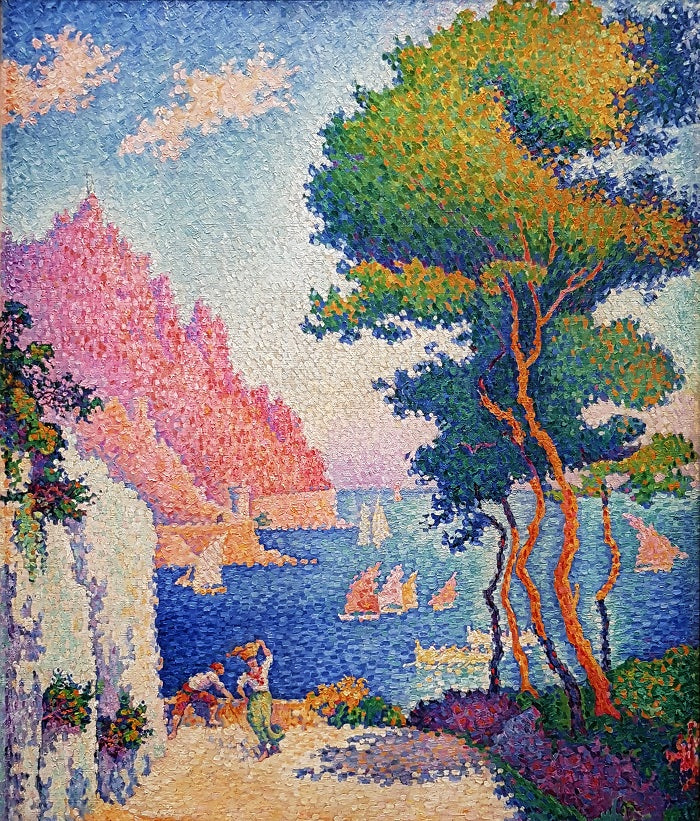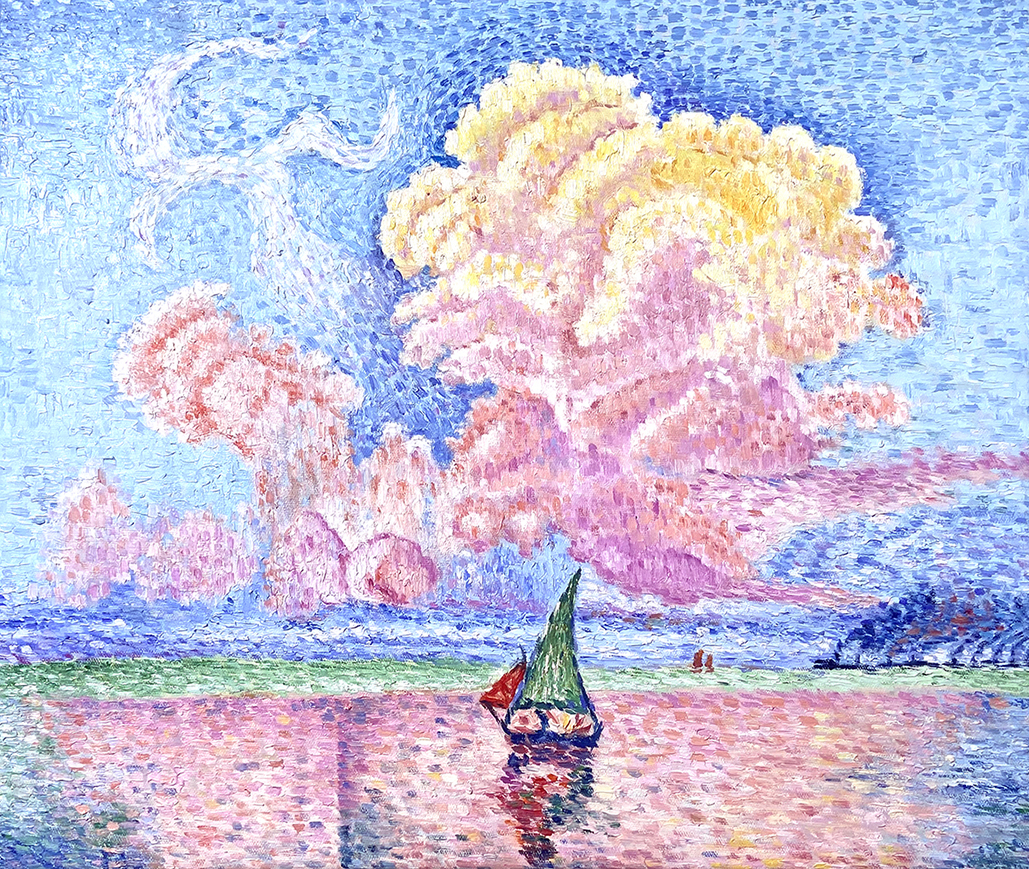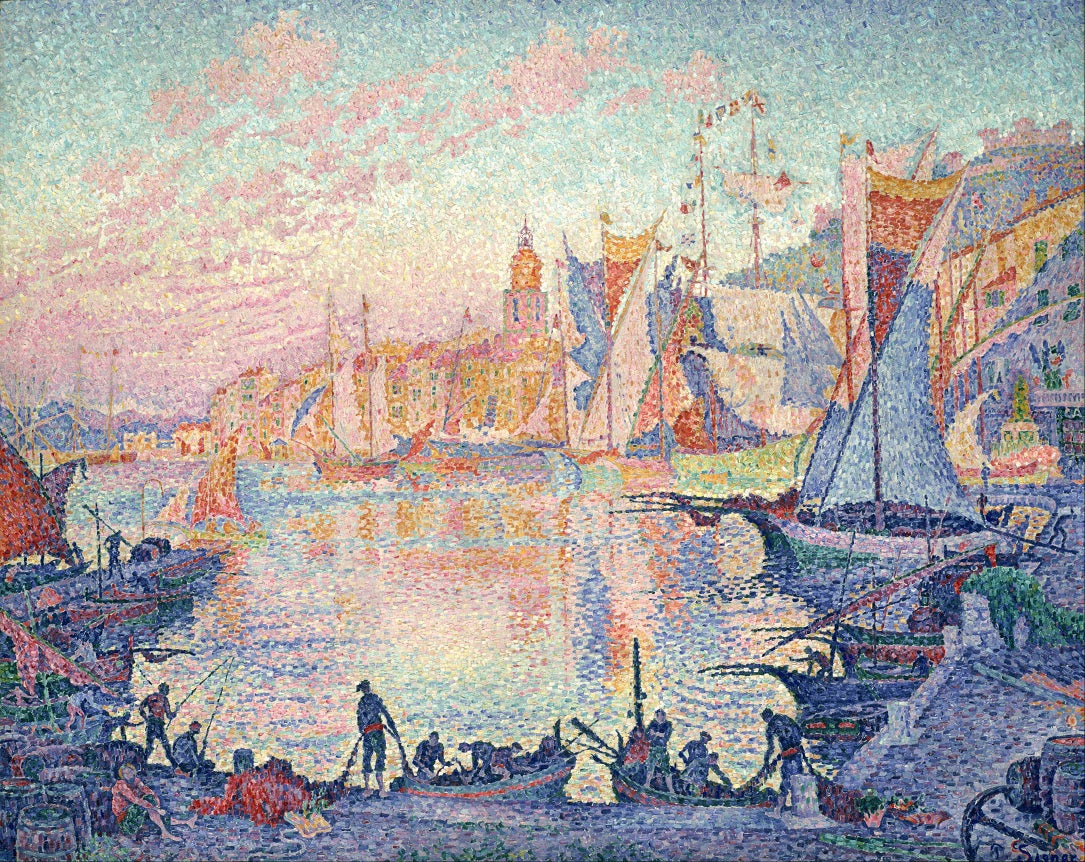Paul Signac was a French painter born in 1863. He is best known for his use of the pointillism technique, which involves painting with small dots of colour. This technique was developed by Signac and Georges Seurat, who were the first two artists to use it. Signac's paintings are characterised by their vivid colours and powerful brushstrokes. He often used a palette knife to apply the paint to his canvases, resulting in bold, textured brushstrokes. In addition to being a prolific painter, Signac was also an accomplished writer and art theorist. He wrote several books on art history and aesthetics, and developed his own theories on colour harmony and composition. Signac's work had a major influence on the development of 20th century art and he is considered one of the most important painters of the Neo-Impressionist movement.
The portrait of Félix Fénéon

In 1890, Signac honoured his friend, the influential art critic, dealer, collector, political activist and curator Félix Fénéon, with a portrait that remains one of the artist's most memorable and successful works in the neo-impressionist and pointillist styles. This unconventional portrait reflects the originality of the subject. The enigmatic Fénéon, with his goatee, cane and top hat, seems to trigger a process of abstraction from the ironically white flower, which he stretches into the swirl of brightly coloured and patterned waves.
In the image, the flower and Fénéon remain static in the midst of a symphony of colours; the music is suggested by the word "Opus" in the title. As for the title, MoMA suggests that the very long title of this work may be "a parody of scientific terminology".
Date of the work : 1886
Original dimensions : 89.5 x 116.5 cm
Place of conservation : Kröller-Müller Museum, Otterlo, Netherlands
Capo Di Noli

Capo di Noli is the title of one of Signac's many paintings depicting a scene in the Mediterranean. The Capo di Noli is a huge cam on the Italian Riviera, not far southwest of the large Italian port city of Genoa. Signac walked there from Saint-Tropez two years before the painting was completed. He wrote that he "wanted to push every corner of the canvas to the absolute extreme in terms of colour".
In addition to boating, Paul Signac also enjoyed walking and probably reached this cape on foot a few years earlier. He did so from Saint-Tropez, a French coastal town popular with artists at the time. It was a healthy walk and he was sure to produce a masterpiece of painting two years later.
Date of the work : 1898
Original dimensions : 93.5 × 75 cm
Place of conservation : Wallraf–Richartz Museum, Cologne, Germany
Antibes, the Pink Cloud

It was in Antibes that Signac painted some of his most vivid pointillist works. He painted as often in watercolour as in oil, but the subjects of his later years were mainly limited to harbour scenes, such as this one, and riverbanks. Although he travelled widely and painted where he went, the boats and other elements of a painting of the Grand Canal in Venice are very similar to those in paintings of Antibes, Constantinople or Marseille. All are radiant with colour and reflect his much less strict adherence to the disciplined and organised approach of Neo-Impressionism, which was, as one art historian, John Leighton, put it, "an art of renunciation and restraint."
It seems that once Signac had freed himself somewhat from what he came to regard as "the burden of description", he was able to produce optical effects of a different kind. Much less meticulously established, the pigment marks - bright greens, blues and pinks in the foreground and warm oranges, yellows and reds beyond - create an effect of constant movement. Instead of being merely shimmering like his early neo-Impressionist works, the later works have a kind of unbridled romantic vivacity more in keeping with the paintings of the Fauves, Symbolists and Nabis. Indeed, the painter Maurice Denis described Signac's later works, 'with their combination of gradated colours and feeling', as a kind of 'reasoned romanticism', so different from the 'scientific naturalism' of his works of the 1880s and 1890s.
Date of the work : 1916
Original dimensions : 92 x 73 cm
Place of conservation : Private collection
Place des Lices, St Tropez

The place des Lices is one of the most popular squares in Saint-Tropez, one of the most popular towns on the French Riviera. It is located near the town's Vieux Port and was a favourite spot for artists. This pointillist painting depicts the square in one of its quietest moments, with a single figure sitting with his back to a bench. The twisted trees are painted blue, which contrasts with the prominent yellow of the painting.
The most remarkable attractions of the square are the rows of plane trees that are well over 100 years old. In addition to the colourful Place des Lices, Signac also painted another popular picture there entitled "Fontaine des Lices", which depicts the fountain in the square.
Date of the work : 1893
Original dimensions : 65.4 x 81.9 cm
Place of conservation : Carnegie Museum of Art, Pittsburgh, USA
The Port of St Tropez

Signac was very shocked by the death of Seurat, who had joined him in spreading neo-impressionism. Thanks to the efforts of his friend the painter H. E. Cross, Signac left the year after Seurat's death (1892) for a yacht trip around the Mediterranean. During this trip he discovered the still small fishing port of Saint-Tropez and for the next ten years he travelled between Saint-Tropez and Paris to create his paintings.
This trip was the inspiration for his painting The Port of Saint-Tropez, which is a beautiful and serene pointillist work of art. The different colours used in the painting create a soothing effect, and the overall composition is very pleasing to the eye. The scene depicted in the painting is one of tranquillity and relaxation, and it is easy to imagine oneself transported to the French Riviera.
Date of the work : 1899
Original dimensions : 81.5 x 65.4 cm
Place of conservation : Musée de l'Annonciade, St. Tropez



